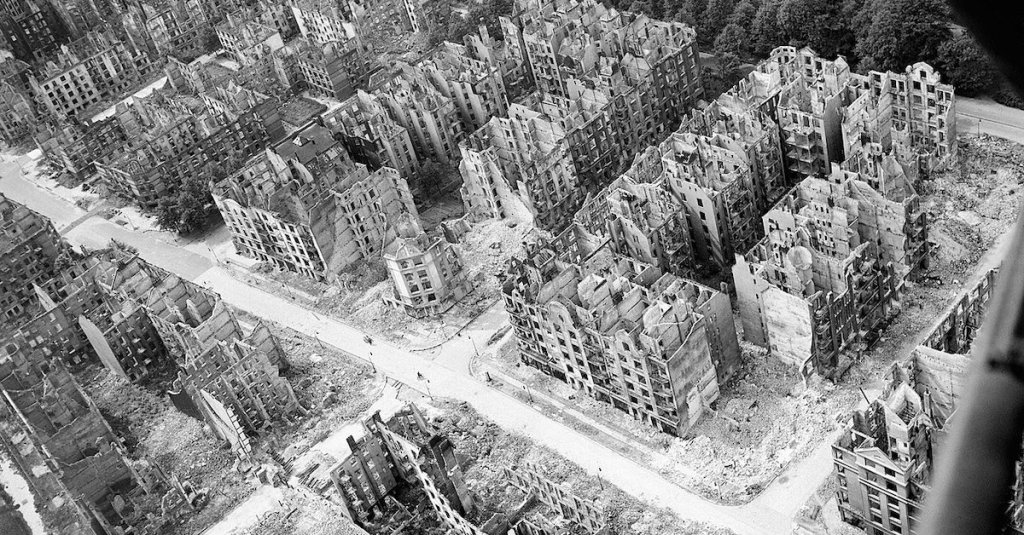On July 24, 1943, the British responded to the blitzkrieg of Great Britain with an attack against the German city of Hamburg in what was called Operation Gomorrah, a reference to the “biblical rain of ruin and fire coming from above.”
Earlier in the month, Germany began bombing raids against Great Britain, who decided to return the favor. On the evening of July 24, 1791, British aircraft dropped 2,300 tons of bombs on Hamburg — the equivalent of the Luftwaffe’s first five raids on the city of London. According to the National World War II Museum, “Included in the aerial salvo were 8,000-pound “block busters” and 4,000-pound “cookies,” along with over 350,000 individual incendiary bombs. It was these incendiary bombs that caused much of the havoc. Eyewitnesses described the next few hours as filled with a continuing stream of explosions. Time stood still as people crammed into shelters with the mass of humanity shaking along with the structures’ concrete walls; with no lights, water, or food, the people who made it to safety could only wait. Most of the destruction was not from the explosions, but the ensuing fires. This was intended as incendiaries started the fires, but cleverly placed high explosive bombs along with delayed-action fuses prevented fire brigades from reacting to the resulting blaze. As the RAF bombers cleared the area and returned home, it was discovered that this first raid cost them a mere 12 planes.”

At the time, the Battle of Hamburg was the heaviest assault in the history of aerial warfare and utilized an early form of chaff by the Royal Air Force to confuse German radar.
The attacks on Hamburg continued through November of that year, killing over 30,000 people, including civilians seeking safety in air raid shelters and cellars, and destroying hundreds of buildings, including industrial and munitions plants and over 50% residential neighborhoods.
Hitler was so distraught over the destruction, he refused to visit the city, leaving the people of Hamburg alone in the wreckage.
Featured Image: Royal Air Force Bomber Command, 1942-1945. Oblique aerial view of ruined residential and commercial buildings south of the Eilbektal Park (seen at upper right) in the Eilbek district of Hamburg, Germany. These were among the 16,000 multi-storeyed apartment buildings destroyed by the firestorm which developed during the raid by Bomber Command on the night of 27/28 July 1943 during Operation Gomorrah). The road running diagonally from upper left to lower right is Eilbeker Weg, crossed by Rückertstraße.


